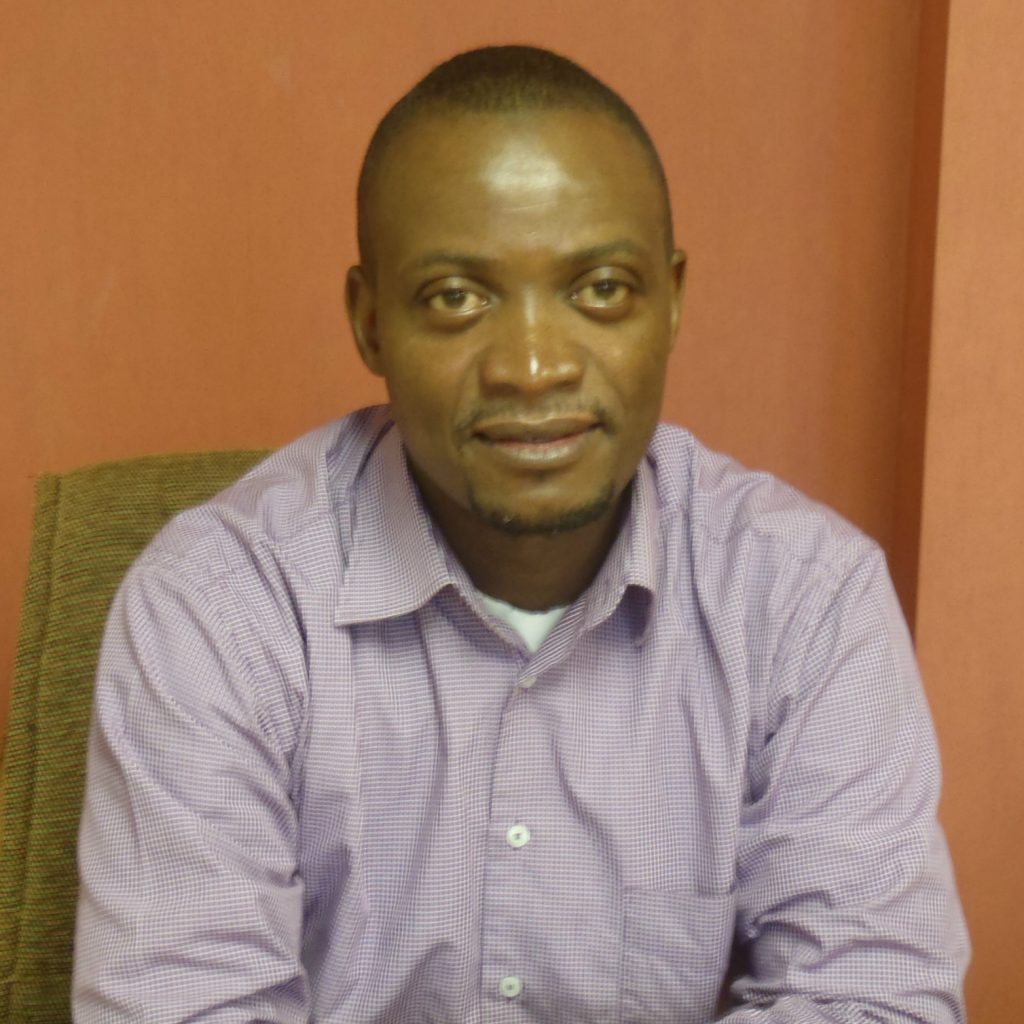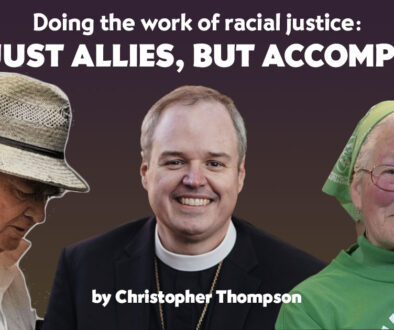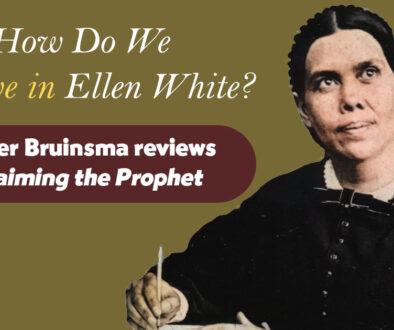Can We Make Room for Cultural Differences?
By Alvin Masarira
The Seventh-day Adventist Church considers itself to be in the footsteps of the protestant reformation which has as one of its key pillars sola scriptura (by scripture alone). This is a fundamental belief that the Bible alone is the rule of faith and practice. Nothing without biblical foundation or that deviates from its teachings should be taught or practiced in the church.
There are debates the Christian community on the understanding of Scripture, and many Christian churches have articulated their views. For example, the United Presbyterian Church in America formulated in 1967 this confession of faith concerning the Bible:
“The Scriptures, given under the guidance of the Holy Spirit, are nevertheless the words of men, conditioned by the language, thought forms, and literary fashions of the place and times at which they were written. They reflect the view of life, history, and the cosmos which were then current. The church, therefore, has an obligation to approach the Scriptures with a literary and historical understanding. As God has spoken his word in diverse cultural situations, the church is confident that he will continue to speak through the Scriptures in a changing world and in every form of human culture.”
Even though the church was established by God for mission, the way it conducts its programs and mission is sometimes debated and contested among its members. There are conflicts over the use of so-called contemporary methods to make church attractive to youth, the unchurched and the modern generation. Should our evangelism programs adopt some methods from the secular world of entertainment or pop culture in order to speak to the contemporary mind?
So how do we understand the Apostle Paul’s statement in 1 Corinthians 9:19-23 where he says
“Although I am free in regard to all, I have made myself a slave to all so as to win over as many as possible. To the Jews I became like a Jew to win over Jews; to those under the law I became like one under the law—though I myself am not under the law—to win over those under the law. …. I have become all things to all, to save at least some. All this I do for the sake of the gospel, so that I too may have a share in it.”
Diversity in the Church
The Adventist Church has about 20 million adult members worshipping in over 78,000 churches and 70,000 companies in over 200 countries. This membership is extremely diverse in terms of geographical location, race, culture, language, social status, and levels of education. Our diversity forms a rich tapestry that is paraded at every General Conference session. We welcome this diversity as a blessing and an asset. It confirms the message of the first angel of Revelation 14:6, “…to every tribe, tongue and people…” as well as the picture painted in Revelation 7:9 of a multitude of the redeemed, too large to count “…from every nation and tribe and people and tongue”.
However, beautiful as it is, our diversity creates a myriad of pressure points, areas of friction and disagreement. And these zones of tension are facilitated by the fact that Adventism encourages members to study on their own and discover the Bible truths without waiting for a dogmatic decree from the leaders. The Adventist Church does not consider the clergy as some super Christians who have a special connection to God superior to that of the laity. All 20 million-plus members are constantly encouraged to discover the truth for themselves and then share it with others.
So which version of Adventism is the correct one on a specific matter? Since we all have been praying and studying, who heard God’s voice correctly, and who misunderstood Him? What do we do where we don’t have consensus?
The issues over which members of such a broad and diverse movement are likely to disagree are many and varied, and they test our movement’s ability to be a big tent that accommodates the variations within it. It poses serious questions to the movement about the setting of boundaries and how far these can be pushed. And it requires wisdom from the leadership in dealing with such diversity and on how to be gracious and accommodating, but firm.
With such cultural diversity within the movement should the Adventist Church make allowances for differences within its membership? The early church had to deal with the issue of circumcision which had become a point of contention. This was a major cultural issue for the Jews that could not just be ignored on this side of Calvary’s cross, as was evident in the case of young Timothy in Acts 16.
And if the Adventist Church does make allowances for cultural differences, the next questions would be, in what areas and how far should such allowances go? One of the reasons for the decentralization of Church authority and the devolution of some of the authority to the Unions and Divisions was to accommodate regional and cultural-specific challenges. This was expressed in a statement at the General Conference Annual Council in 2012, the Statement on the GC Position on Policy Variance:
“At the same time as the Church has worked to preserve unity, the effect of church growth has enlarged the understanding of diversity and its rightful place in a worldwide community. To expect that every entity of the world will look and function exactly like every other entity of its type may in itself become an impediment to mission. The development of structural designs in the history of the Church indicates that unity must be built on a stronger foundation than uniformity.”… “There must be room to recognize the need for a legitimacy of local adaptation of policies and procedures that facilitate the mission while not diminishing the worldwide identity, harmony and unity of the Church.”
Making Provision for Differences
The Seventh-day Adventist Church has in some cases made attempts to accommodate its cultural and regional diversity through special provisions in policy for unique circumstances. This happens in administrative matters where, for example, the legislative environment in one country might not allow the church to operate in the same way as in another country. The variance on such matters is generally easily accepted by the global church family. It is much more difficult to accept variances in areas which some consider to be doctrinal, theological or biblical, however this is understood. The challenges sharpen when there is no consensus on whether an issue is indeed theological and doctrinal, or whether it is simply administrative.
A contentious issue in the early years was the wearing of wedding rings. In 1892 Ellen White counseled American Adventists against the wearing of wedding rings, but that she would not condemn those in countries where it was culturally obligatory to do so. In 1972 GC and NAD leaders met and reaffirmed their opposition to the wearing of ornamental jewelry (and an action to that effect was taken subsequently by the 1972 Annual Council). The 1986 year-end meeting of the North American Division Committee had a 3-hour lively debate that focused largely upon whether candidates for baptism and church membership should be permitted to continue wearing a simple (non-jewelry) wedding band if such had been their practice before. Today, 30 years later, some members still are opposed to the wearing of the wedding ring.
Another issue that caused heated debate was the question of polygamous men who want to be baptized, and what to do with the wives. After much discussion the General Conference made special provisions for such relationships in its policy. The GC Working Policy Section C70 on Polygamy has a statement that reads “wives of a polygamist, who have entered into the marriage in their heathen state and who upon accepting Christianity are still not permitted to leave their husbands because of tribal customs, may upon approval of the local and union committees become baptized members of the church.” But since the marriage relationship has a biblical foundation, there are some Adventists who do not agree with this policy, believing it permits the continuation of a polygamous relationship even after conversion. Shouldn’t the new converts have the boldness to stand for what they believe “though the heavens fall?”
The lack of consensus in the debate on the ordination of female ministers is viewed by some in the church to be a result of cultural differences. They believe it would be prudent to allow some regions to ordain female ministers, a practice which might not find acceptance in other regions since the role of women is viewed differently in different cultures.
There is also the question of what is commonly regarded as“racially divided” local conferences, which has caused tensions among Adventists in some parts of the world, mainly South Africa and North America. There is an argument that the separate conferences perpetuate racial segregation and that this violates fundamental biblical principles. There are others who argue that the separate conferences (which clearly had their origins in racial segregation) are simply for administrative effectiveness and efficiencies. Each conference focuses on specific demographics and racial or cultural groups, a task that a merged conference might not perform optimally.
Even where the failure to unite church administrative structures is not due to ethnic differences, the matter still leads to tensions among the believers. An example of such is the case of the two Union Conferences in Germany (North German and South German) which have failed to merge in spite of the many attempts and constituency meetings over the last 25 years, even though they have a combined membership of only 34,800 worshippers in about 560 congregations. One of the reasons for the failure to unite these two small organizations is a difference of opinion about what defines true Adventism.
Should Adventists the world over be obliged to study the same Sabbath School lesson every week? The Adult Sabbath School Bible Study Guide is prepared by the Office of the Adult Bible Study Guide of the General Conference, and some of the themes have little relevance in certain parts of the world. Such was the case with the 2013 first quarter Quarterly with the theme “Origins”. The focus was on creation and evolution, which really found little resonance with many African Adventists, since the existence of a Creator God is accepted in almost all African cultures. There might be a debate about the name of this Creator and how He should be worshipped, but the idea of evolution is foreign to Africans, even to those who worship ancestors.
The questions continue about whether the church should allow for variations on how the Adventist faith is expressed in the context of the local culture and traditions. What kind of music should be used in the church, and what kind of methods used to evangelize the society? How should Adventists relate and witness to communities that are predominantly non-Christian, such as Muslim, Hindu, traditionalists and others? How should Adventists reach out to the secularized communities of Western Europe?
What Can We Do?
Although the church constantly claims that God is leading, one sometimes gets a sense that the church sees the need to assist Him in His leadership role, as though the ark of the Lord might fall unless we lend a helping hand to prop it. Our attitudes suggest that we as a church are not sufficiently bold in our faith that the Holy Spirit is indeed in control in all parts of the world church. The church’s statement on Policy Variance from 2012, quoted above, echoes the same sentiment as the United Presbyterian Church statement from 1967: that there is a need to recognize that God speaks in every form of human culture.
However, in practice, the Adventist church seems reluctant to live the spirit of this recognition, and there is a tendency to demand uniformity. The church seems to have forgotten one of the reasons for the administrative restructuring that took place at the beginning of the 20th century leading to the formation of Union Conferences: that God speaks to people of all cultures and reaches them in a manner that is specific to each one of them. It cannot be expected that the church in Africa operate in exactly the same manner as the church in Asia or Europe. We should believe that the Holy Spirit will lead his church in different places in a manner that is appropriate and relevant for that region and culture. The way God leads the church in one area, might appear strange to others in a different region, but the church needs to believe that the One who founded the church will take care of it.
Difference and Uniformity
The allowance for cultural differences might be unsettling for those who find safety in uniformity, but there is need to realize that the world is not as ideal as it was before sin, and sometimes there are no perfect solutions and methods. There is not always a clear choice between black and white, and we may need to operate in grey areas.
All through the Bible we see evidence of a God who adapts to specific cultural conditions in order to effectively reach lost humanity. As the Apostle Paul says, “for now we see in a mirror, dimly, but then face to face. Now I know in part…” (I Corinthians 13: 12). Our knowledge and understanding of God is only partial. As Loren Seibold observed (Spectrum website, 21 June 2012): “The universe is big and complicated and I’ve always suspected we’ll probably, on the other side, discover that a lot of what we were certain about was partial at best, and in some cases thoroughly confused. Thank God we’re saved by grace, not by being right.”
As a church we need to be constantly praying that God keeps us open and willing to hear Him direct us in the path we should go as we serve and indeed represent Him in a complex world that surrounds us. When we do that, we will be amazed at how He leads us and what He is able to accomplish through ways we never thought possible.

Alvin Masarira is originally from Zimbabwe, and is now a Structural Engineering Consultant based in Johannesburg, South Africa. He and his wife Limakatso, a medical doctor, have three children.
If you appreciated this piece, please consider giving a donation to Adventist Today to keep this quality of content available!




